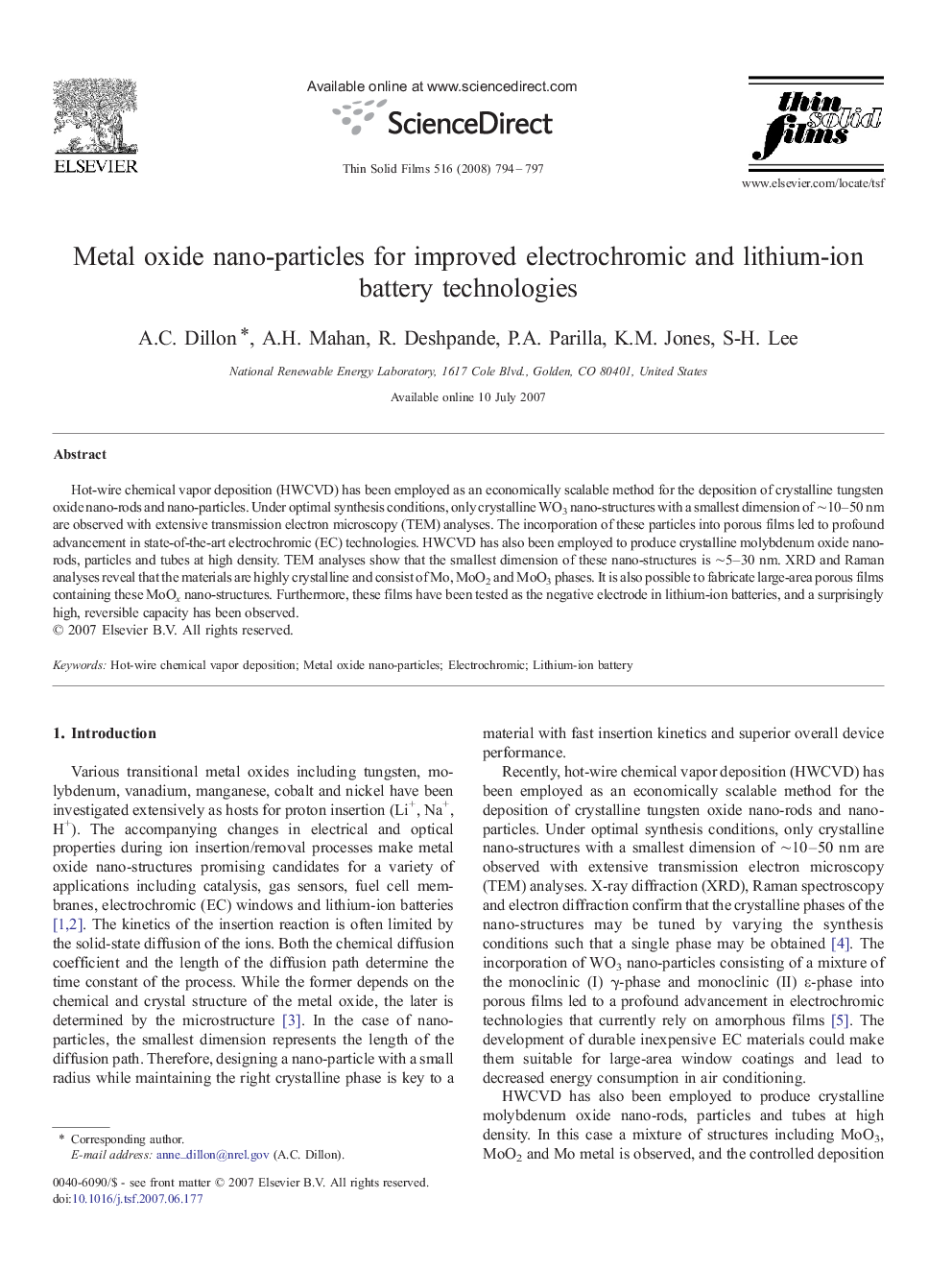| Article ID | Journal | Published Year | Pages | File Type |
|---|---|---|---|---|
| 1673845 | Thin Solid Films | 2008 | 4 Pages |
Hot-wire chemical vapor deposition (HWCVD) has been employed as an economically scalable method for the deposition of crystalline tungsten oxide nano-rods and nano-particles. Under optimal synthesis conditions, only crystalline WO3 nano-structures with a smallest dimension of ∼10–50 nm are observed with extensive transmission electron microscopy (TEM) analyses. The incorporation of these particles into porous films led to profound advancement in state-of-the-art electrochromic (EC) technologies. HWCVD has also been employed to produce crystalline molybdenum oxide nano-rods, particles and tubes at high density. TEM analyses show that the smallest dimension of these nano-structures is ∼5–30 nm. XRD and Raman analyses reveal that the materials are highly crystalline and consist of Mo, MoO2 and MoO3 phases. It is also possible to fabricate large-area porous films containing these MoOx nano-structures. Furthermore, these films have been tested as the negative electrode in lithium-ion batteries, and a surprisingly high, reversible capacity has been observed.
